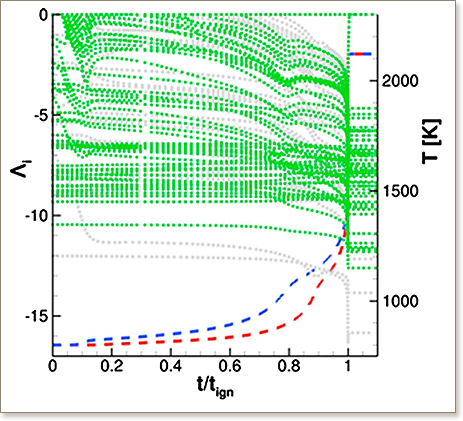Development of a reduced four-component (toluene/n-heptane/iso-octane/ethanol) gasoline surrogate model

Development of a reduced four-component (toluene/n-heptane/iso-octane/ethanol) gasoline surrogate model
Y. Li, A. Alfazazi, B. Mohan, E.A. Tingas, J. Badra, H.G. Im, S.M. Sarathy
Fuel, 247, pp. 164-178, (2019)

The prospect of blending gasoline fuel with ethanol is being investigated as a potential way to improve the knock residence of the base gasoline. However, one of the drawbacks is a lack of proper understanding of the reason for the non-linear response of blending ethanol and gasoline. This non-linearity could be better understood by an improved knowledge of the interactions of these fuel components at a molecular level. This study proposed a highly reduced four-component (toluene/n-heptane/iso-octane/ethanol) gasoline surrogate model containing 59 species and 270 reactions. The model was reduced using the direct relation graph with expert knowledge (DRG-X) (Lu and Law, 20015; Lu et al., 2011) and isomerlumping method. The computational singular perturbation (CSP) analysis were performed to reduce the potential stiffness issues by accordingly adjusting the Arrhenius coefficients of the proper reactions. The model has been comprehensively validated against wide range of ignition delay times (IDT) and flame speed (FS) measurement data as well as compared against two representative literature models from Liu et al. (2013) and Wang et al. (2015). Overall, good agreements were observed between model predictions and experimental data across the entire research octane number (RON), equivalence ratio, pressure and temperature range. In addition, the model has also been coupled with the computational fluid dynamic (CFD) models to simulate the experimental data of constant volume reacting spray of a low-octane gasoline (Haltermann straight-run naphtha), and in-cylinder pressures and temperatures of a high-octane gasoline (Haltermann Gasoline) combustion in a heavy duty compression ignition engine. The coupled model can qualitatively predict the experimentally obtained data with an improved performance for PRF, TPRF, and TPRF-ethanol surrogates.

"KAUST shall be a beacon for peace, hope and reconciliation, and shall serve the people of the Kingdom and the world."
King Abdullah bin Abdulaziz Al Saud, 1924 – 2015
Thuwal 23955-6900, Kingdom of Saudi Arabia
© King Abdullah University of Science and Technology. All rights reserved